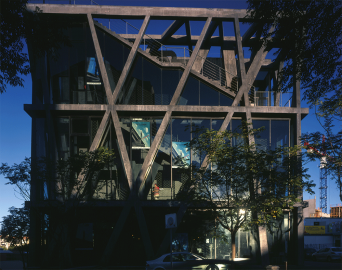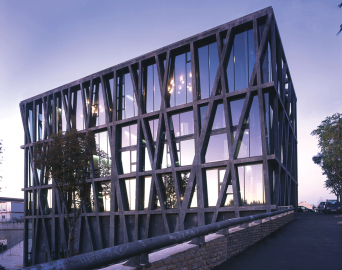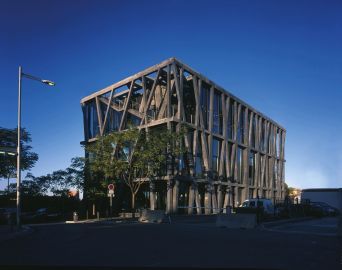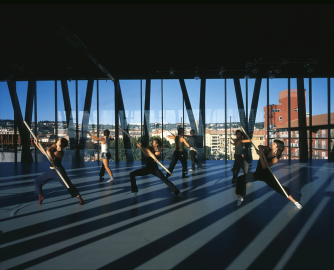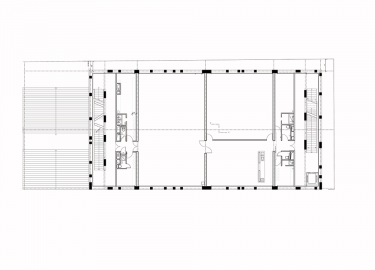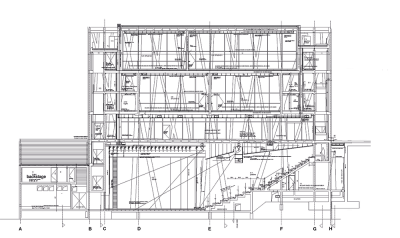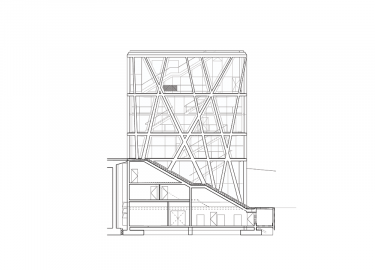National Choreographic Centre
The National Choreographic Centre is located on an 18 x 36-metre site beside a large flight of stairs. The project addresses the sites spatial restrictions and circumstances not only as a challenge but also as an opportunity: it attempts to solve the problem of noise caused by the nearby railway; to respect the phreatic layers; to meet the regulations related to the seismic risks of the site; and to mitigate ground tremors caused by the dancers steps.
The Pavillon Noir is sober in terms of colour and elements. The need for open floors, completely free of constraints, required shifting the structural load to the façades, which sustain the entire building and consist of black concrete structures that vary in thickness depending on the load they support. Behind the façades there is only glass: the interior is absolutely open-plan, with neither walls nor columns.
The projects main goal was to comply with the objective dictates of mathematics in just proportion: nothing lacking and nothing in excess. The structural solution celebrates effort and work: essentials only lightness and strength, skin and bone. The result causes genuine impact. Conceived as a tribute to the work of choreographer Angelin Preljocaj, the building is based on the idea that effort may speak of something more than difficulty and seek its own image: a taut body, a half smile and a warm unique presence.
The centre comprises four workshops and an auditorium for the use of dance companies. Conceived to accommodate all the phases of the creative process, it is a venue for experimentation and for international encounters from which new talent emerges. Since it is a pedagogical space, it provides wide sectors of the public with access to dance, serving also as a nucleus of dissemination with a year-round programme and as a centre of multicultural cooperation.

